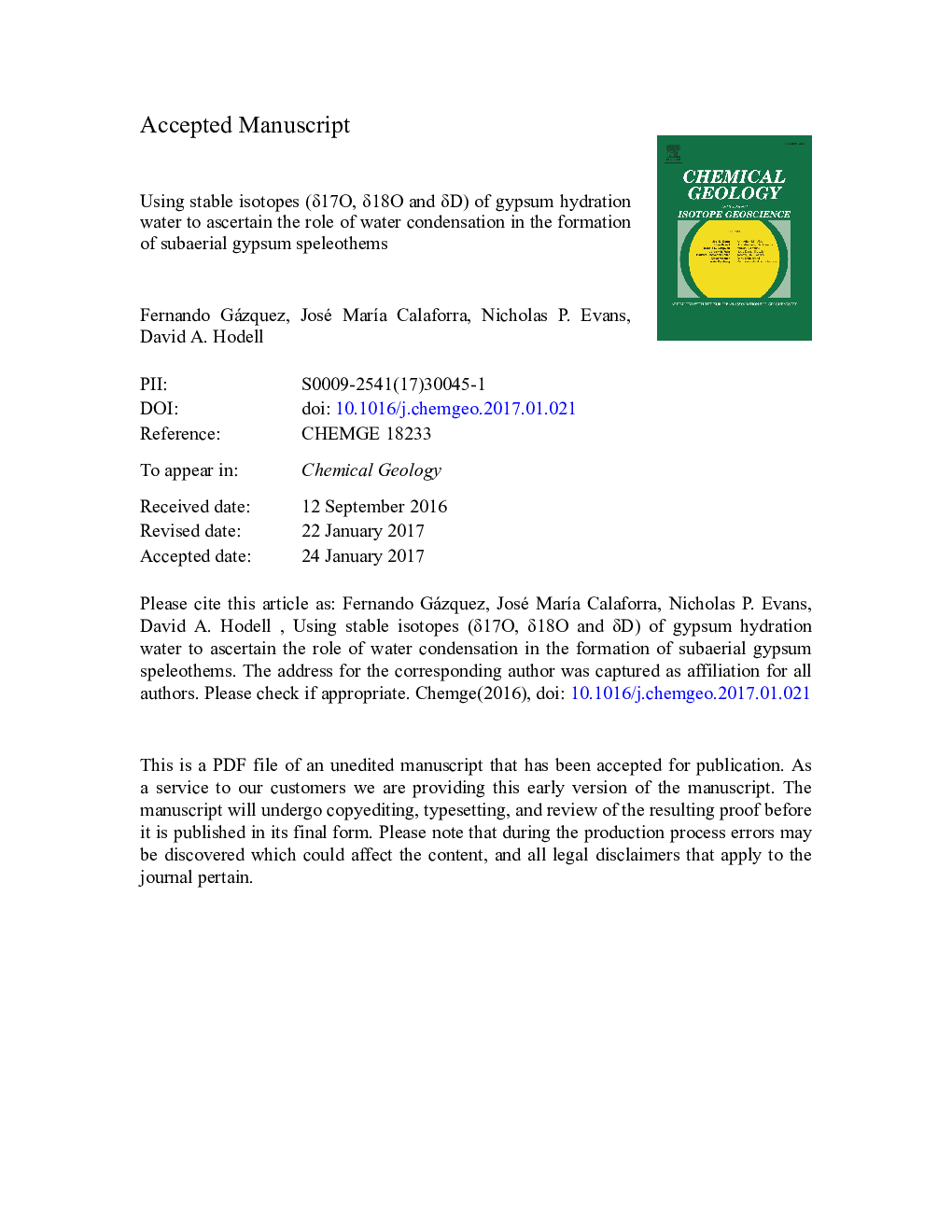| Article ID | Journal | Published Year | Pages | File Type |
|---|---|---|---|---|
| 5782968 | Chemical Geology | 2017 | 48 Pages |
Abstract
We analyzed the stable isotopes (δ17O, δ18O and δD) of gypsum hydration water (GHW) in a variety of speleothems, as well as condensation and infiltration waters in five caves of the semiarid gypsum karst of Sorbas basin (Almeria, SE Spain). Microclimate parameters (air temperature, relative humidity and effective condensation rate) were also monitored over an annual cycle. We found that the mother solution from which the majority of gypsum speleothems grow is composed of a mixture of condensation (~ 60%) and infiltration water (~ 40%) that undergoes evaporation. Although evaporation of infiltration water alone was thought to be responsible for secondary gypsum precipitation in vadose caves, our results suggest that condensation can be a major source of water for the formation of gypsum speleothems. The modelled d-excess and Î17O trajectories of water during the evaporative process confirm that the majority of speleothems precipitate from a mixture of condensation and infiltration water under relative humidity of 75-85%, similar to that measured in the cave atmosphere during winter. These findings have important implications for future studies of gypsum speleothems as paleoenvironmental archives.
Related Topics
Physical Sciences and Engineering
Earth and Planetary Sciences
Geochemistry and Petrology
Authors
Fernando Gázquez, José MarÃa Calaforra, Nicholas P. Evans, David A. Hodell,
